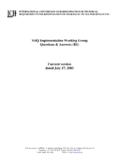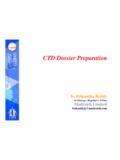Transcription of ORGANISATION OF THE COMMON TECHNICAL D …
1 INTERNATIONAL COUNCIL FOR HARMONISATION OF TECHNICAL REQUIREMENTS FOR PHARMACEUTICALS FOR HUMAN USE ICH HARMONISED GUIDELINE ORGANISATION OF THE COMMON TECHNICAL DOCUMENT FOR THE REGISTRATION OF PHARMACEUTICALS FOR HUMAN USE M4 Current Step 4 version dated June 15, 2016 This Guideline has been developed by the appropriate ICH Expert Working Group and has been subject to consultation by the regulatory parties, in accordance with the ICH Process. At Step 4 of the Process the final draft is recommended for adoption to the regulatory bodies of the European Union, Japan, USA, Canada and Switzerland.
2 M4(R3) Document History First Codification History Date New Codification November 2005 M4 Approval by the Steering Committee under Step 2 and release for public consultation. 20 July 2000 M4 M4 Approval by the Steering Committee under Step 4 and recommendation for adoption to the three ICH regulatory bodies. 8 November 2000 M4 M4 Approval by the Steering Committee of Numbering and Section Headers changes for consistency directly under Step 4 without further public consultation. Inclusion of the Granularity Document as Annex.
3 12 September 2002 M4(R1) M4 Approval by the Steering Committee of the Revision of the Annex: Granularity Document. 11 November 2003 M4(R2) M4 Approval by the Steering Committee of the corrections given on the Revised Annex: Granularity Document. 13 January 2004 M4(R3) Current Step 4 version M4 Approval by the Assembly of the corrections given on the Revised Annex: Granularity Document. 15 June 2016 M4(R4) In order to facilitate the implementation of the M4 guideline, the ICH Experts have developed a series of Q&As which can be downloaded from the ICH web site: M4 Questions & Answers History M4 Q&As Approval by the Steering Committee.
4 12 September 2002 M4 Q&As M4 Q&As Approval by the Steering Committee of the newly added questions. 18 July 2003 M4 Q&As (R1) M4 Q&As Approval by the Steering Committee of the newly added questions. 11 November 2003 M4 Q&As (R2) Current M4 Questions & Answers posted on the web site M4 Q&As Approval by the Steering Committee of the newly added questions. 10 June 2004 M4 Q&As (R3) 1 ORGANISATION OF THE COMMON TECHNICAL DOCUMENT FOR THE REGISTRATION OF PHARMACEUTICALS FOR HUMAN USE ICH Harmonised Guideline Having reached Step 4 of the ICH Process at the ICH Steering Committee meeting on November 8, 2000, this guideline is recommended for adoption to the three regulatory parties to ICH (Numbering and Section Headers have been edited for consistency and use in e-CTD as agreed at the Washington DC Meeting, September 11-12, 2002) (The Annex.)
5 Granularity Document has been revised at the Steering Committee held in Osaka, November 11, 2003 and has been corrected on January 13, 2004 : The table for Module 2 has a row for added) (The Annex: Granularity Document has been adopted at the Assembly meeting on June 15, 2016 to add Module 2 and 3 tables and Appendices for eCTD v4, as well as, corrections to Module 2 and 3 tables for eCTD ) OBJECTIVE OF THE GUIDELINE This guideline presents the agreed upon COMMON format for the preparation of a well-structured COMMON TECHNICAL Document for applications that will be submitted to regulatory authorities.
6 A COMMON format for the TECHNICAL documentation will significantly reduce the time and resources needed to compile applications for registration of human pharmaceuticals and will ease the preparation of electronic submissions. Regulatory reviews and communication with the applicant will be facilitated by a standard document of COMMON elements. In addition, exchange of regulatory information between Regulatory Authorities will be simplified. BACKGROUND Through the ICH process, considerable harmonisation has been achieved among the three regions in the TECHNICAL requirements for the registration of pharmaceuticals for human use.
7 However, until now, there has been no harmonisation of the ORGANISATION of the registration documents. Each region has its own requirements for the ORGANISATION of the TECHNICAL reports in the submission and for the preparation of the summaries and tables. In Japan, the applicants must prepare the GAIYO, which organises and presents a summary of the TECHNICAL information. In Europe, Expert Reports and tabulated summaries are required, and written summaries are recommended. The FDA has guidance regarding the format and content of the New Drug Application.
8 To avoid the need to generate and compile different registration dossiers, this guideline describes a format for the COMMON TECHNICAL Document that will be acceptable in all three regions. SCOPE OF THE GUIDELINE This guideline primarily addresses the ORGANISATION of the information to be presented in registration applications for new pharmaceuticals (including biotechnology-derived products). This guideline is not intended to indicate what studies are required. It merely indicates an appropriate format for the data that have been acquired.
9 Applicants should not modify the overall ORGANISATION of the COMMON TECHNICAL Document as outlined in the guideline. However, in the Nonclinical and Clinical Summaries, applicants can modify individual ORGANISATION of The COMMON TECHNICAL Document 2 formats if needed to provide the best possible presentation of the TECHNICAL information, in order to facilitate the understanding and evaluation of the results. GENERAL PRINCIPLES Throughout the COMMON TECHNICAL Document, the display of information should be unambiguous and transparent, in order to facilitate the review of the basic data and to help a reviewer become quickly oriented to the application contents.
10 Text and tables should be prepared using margins that allow the document to be printed on both A4 paper ( and Japan) and x 11 paper ( ). The left-hand margin should be sufficiently large that information is not obscured by the method of binding. Font sizes for text and tables should be of a style and size that are large enough to be easily legible, even after photocopying. Times New Roman, 12-point font, is recommended for narrative text. Every page should be numbered, according to the granularity document. Acronyms and abbreviations should be defined the first time they are used in each module.
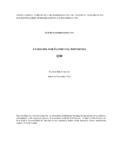
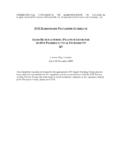
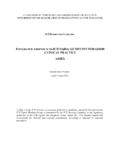
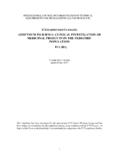
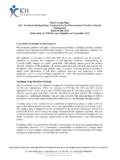
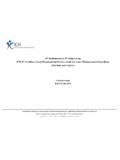
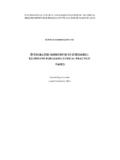
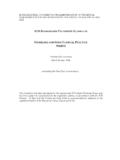
![[ICH E2F] [EXAMPLE DSUR – PHASE III …](/cache/preview/1/3/5/f/e/1/c/f/thumb-135fe1cf2cdb82799c462ad0ea089c48.jpg)
